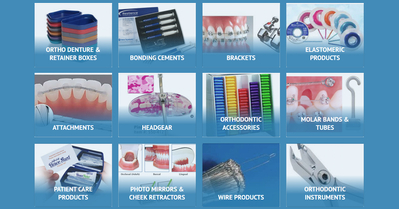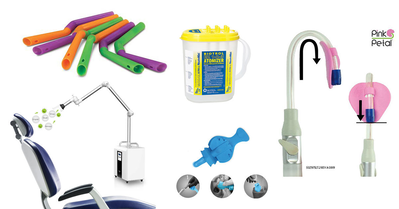3 Must-Have Tools For Successful Endodontics
September 27 2020
Dentists face a challenging question every day: Should a damaged natural tooth be maintained with endodontic and restorative treatment, or should it be replaced with an implant? Implants continue to grow in popularity, and over five million implants are placed in the U.S. every year. But many times, endodontic therapy helps preserve a tooth and eliminates more invasive treatment.
More than 15 million root canals are completed annually in the U.S., and general dentists do nearly 11 million of them. Five million dental implants will be placed, too. Each situation requires a series of decisions to determine the best option.
While there are multiple factors to weigh, remember these three key facts in your clinical decision-making process:
- Endodontics proves successful: Studies show that endodontically-treated teeth show a 95%-97% success rate after eight years.
- Minimal follow-up is needed: A 2008 study showed that only 1.4% of root canals required additional intervention.
- Patients prefer conservative care: A 2020 survey showed that 84% of patients would choose a root canal over an extraction.
When endodontic treatment fits as the best option, the right instruments help deliver results that ensure long-term success. Few procedures involve an array of tools as specialized as those used in endodontics. Here are three key instruments and recommendations for each to include in your clinical flow:
Apex Locator: Debriding, shaping, cleaning, and obturating the canal system requires precise navigation to the apex. But instrumenting beyond the apex may create an inflammatory response that leads to unnecessary discomfort and after-hour calls. A state-of-the-art apex locator belongs in every set-up and enhances the precision of your treatment.
One study evaluated six different apex locators and compared the results to radiographs. 86.3% of cases showed acceptable working length determined by apex locators, and there were no significant differences between models. The combination of x-rays and apex locators offers essential data to produce satisfactory results.
Two To Consider:
- J Morita’s Root ZX II offers the most popular apex locator worldwide. A 97.5% accuracy rate that’s not distorted by blood, suppurative discharge, or electrolytes offers unmatched accuracy you can count on. An oversized color LCD screen gives a clear, animated display with high contrast. Root ZX II also provides a lightweight, low-speed handpiece that integrates with the apex location functionality.
- I-Root Apex Locator: Meta-Biomed’s 5th generation device dual-frequency operation allows exceptional accuracy in dry or wet canals. A clean color display and audible tone operates on a long-lasting battery with auto-off functionality and includes a self-test to ensure accurate operation.
Gates Glidden Drills: Once access is established into the pulp chamber, success hinges on complete debridement and cleaning of the canals. Gates Glidden drills open canal orifices in a way nothing else can. Coronal binding of files can lead to fracture or transportation of instrumentation in the apical third. Good flare also helps the delivery of disinfectants and medicants into the full extent of the canal system.
A study published in 2018 showed that the occurrence of underfilling, overfilling, and ledge formation was more common among dental students who didn’t use a Gates Glidden in their workflow. Providing direct access with coronal preparation of the canals limits the risk for any provider.
Two To Consider:
- Premier Dental makes quality dental instruments for many clinical procedures, including endodontics. This 6-pack offers a solution for every situation with size gradients that can be used independently or in series. Shafts feature indentations that make picking up the right size easy. Plus, shafts are designed so that if they break, they separate near the top for easy retrieval.
- Essential Dental Systems line of endodontic armamentarium includes quality Gates Glidden drills in convenient 5-packs. Color-coding makes it easy to choose the right size for enlargement of the upper portion of the canal or removal of gutta percha.
Barbed Broaches: Sometimes, clinicians rush to start shaping the canals, and they inadequately debride pulp tissue. But a barbed broach quickly removes most tissue, and that leads to faster cleaning and shaping. Plus, irrigants reach deeper, and instruments encounter less resistance and deflection during mechanization.
Two To Consider:
- Roydent Barbed Broaches set the standard for this simple, indispensable tool in a complete endodontic set-up. Their extra sharp and highly-flexible design also features a rounded tip to follow the curve of the canal. Color-coding is a simple characteristic, but it cuts eye-strain and helps make endodontics a little more efficient.
- Premier Dental Plastic Handle Barbed Broaches offer a high-quality alternative in affordable packs of 144. Each broach features 40 spiraled barbs in highly-flexible stainless steel, and the barbs change angulation when navigating narrow canals.
Exceptional endodontic results start and end with the best clinical armamentarium. Whether establishing working length with the latest apex locator or removing hyperemic tissue with a barbed broach, choose quality products. An uncompromised clinical setup reduces stress for the clinical team and helps you deliver long-term success for your patients.







